Thank you so much for choosing to support the Heavy Metal Truant charities. We hope your training is going well and you are looking forward to the ride.
Before you hit the road, here are some fantastic ways to encourage your friends and family to sponsor you.
1. If you haven’t already, email all your contacts (personal and work if appropriate) to let them know what you are up to and why. You should include a link to your RaceNation page and bit about the charities. Here is some suggested text that you could send:
As part of the Heavy Metal Truants, I will be taking on the challenge to raise much needed funds for four great charities, with all proceeds being split equally between Nordoff Robbins, Teenage Cancer Trust, Childline, and Save The Children. I do hope that you will support me generously..
2. Add your online donation page link to your email signature with a very short snippet about what you’re up to. This means that your fundraising page will go out unobtrusively on any email you send.
3. Regularly update your friends and followers using your social media channels (etc.) with how your training is going, and always include your link. Once a week is usually enough but you can do more in the week leading up to the ride. #heavymetaltruants and Don’t forget to include a link to the charities too
4. There are more ways to raise money than simply asking for it, and we encourage you to consider alternative means of hitting your target. From events to bake sales and beyond, but you must run it by us first. Just email heavymetaltruants@gmail.com with your ideas and we’ll get straight back to you.
5. Think about any contacts you have in big (or small) companies. You could ask for a donation and ask your employer if they will match whatever you raise.
Best of luck with all your fundraising and training – we really do appreciate your support.
The Beginner’s Guide To Fundraising
MAKE THE MOST OF FELLOW HEAVY METAL TRUANTS’ EXPERIENCE
• Remember that you need to persevere. Keep pushing for responses. Lose a bit of shyness. Tell the people clearly what you’re raising funds for. And how much it’s going to hurt.
• Facebook hot periods are Friday evenings and Sunday evenings. Go big at these periods.
• Updates on your progress are brilliant – both in training and in fundraising. They must end with a statement encapsulating “we haven’t done enough!”
• Thank every donor. Whatever the size. It means a lot to them.
• Periodic blanket thanks on facebook etc are great. Be humble. Be encouraging. Be noble.
• Always, always, always describe why we are doing this. Always!
CONSULT THE CHARITIES
Ask the charities for any literature, posters or flyers that they may have about the charity and its work. These are excellent for sending out with letters that you write asking for sponsorship, displaying at events you organise or carrying with you when asking for donations. If you are planning to do a collection you will need a sealed collecting tin and an identity badge from one of the charities.
WHO TO APPROACH FOR SPONSORSHIP
There are 3 main groups of people you can approach for donations. Looking at them like this will help you to identify how best to raise your money:
1. Close Contacts – your family and friends. They should be the starting point for your fundraising. Their giving capacity will vary, but because they know you, there is an instant connection to your cause. This part of your fundraising may not make you the most money but it will give you a good start. Raising money from your close contacts depends on getting a large number of people to give as much money as they can afford.
2. Usual Suspects – high profile donors who support a wide range of causes. These will be well known donors who often give to charity e.g. banks and building societies, national companies, smaller companies, local authorities and local newspapers. Offer them something in return – you could wear their company T-shirt on a section of the event and send pictures to your local newspaper wearing it. Great free publicity for them! Remember that these organisations will be the first to be contacted by most fundraisers so try and make your cause sound unique and special. Try writing a letter or email to a named person and follow it up with a phone call, explain exactly what you are doing and who you are raising money for and how that money will help your charity. As well as a monetary donation you can also ask them to donate a raffle prize or provide any resources you may need for an event you have planned. For example, if you are well known at your local sandwich shop, they may provide the refreshments for an event you have organised.
3. Unusual Suspects – donors who you would never expect to support you and come out of the blue. Twitter is a classic example of this where a generous donation comes in from a complete stranger. These are the surprise donors who are not connected to you but who may still help your fundraising. They may come through one of your friends and family or be someone you have never met. They may come to a quiz you have organised, learn more about the charity you are supporting and offer to help you. Add your online donation site with a one-liner about what you are doing to your email footer.
POINTS TO REMEMBER
• There’s no fear in fundraising – be bold – ask everyone you know – friends, family, work mates, members of the sports team you play for, old school friends, your hairdresser…. Remember – if you don’t ask, the charity doesn’t get! Charities rely on people like you to continue their excellent work.
• Most people will give to charity but only when asked. Explain what you are raising money for, so people know where they money goes – read up on the 3 causes so that you are informed if someone asks you what the charities do. Include 3 facts about each cause in your donor request emails.
• Branch out – ask your local pub or shop if you can leave a sealed charity collection box for people to donate their change.
• If people cannot afford to donate money they may be willing to donate their time and energy. Perhaps they could help you plan an event, or bake some cakes for a cake sale?
• Do not feel guilty about asking people for money – you are not going on a holiday. This is a challenge from beginning to end: raising money for charity, training for months in the run up to the event and finally completing the physical challenge – you deserve support!
PUBLICITY
• Make your fundraising cause known to as many people as possible – the more people who know, the more money you will raise.
• Word of mouth – this is one of the best ways to make your cause known. Tell everyone you can think of what you are doing and try and get all your friends and family to do the same. People are far more likely to attend a fundraising event if they know someone else that is going.
• Radio and press – local press are often interested in stories of people within their area, especially something a bit out of the ordinary. Send them a press release about what you are doing or a fundraising event you are organising.
• Twitter – you can use #heavymetaltruants and remember to tag the charities in your posts (for example @NordoffRobbins1) as well as the Heavy Metal Truants (@hmtruants), post a link to your fundraising page, post training updates, photos during the ride – this all helps to encourage donations.
• In any publicity you do, make sure you mention how people can donate money to your cause or find out more about what you are doing.
Social Media Tips
Social media is a hugely powerful tool in getting your supporters to donate: involving them in your journey is the best way to show that you’re undertaking a challenge for a good cause, and remember that you aren’t asking on your behalf – it’s on behalf of kids and young people who need the help so don’t be shy!
- Incentivize giving. Reveal “milestones,” and encourage sharing.
- Involve your audience. Interact with fans on your fundraising page.
- Give photo/video updates on fundraising progress.
- Go Live within the Fundraiser to talk to your fans about the cause.
- Say thanks! Be sure to thank your supporters early and often. We created a way to streamline this via the Thank You Tool.
- Link to it from your Instagram Stories and Instagram bio.
- Include the link to it in any newsletters or emails you may have.

